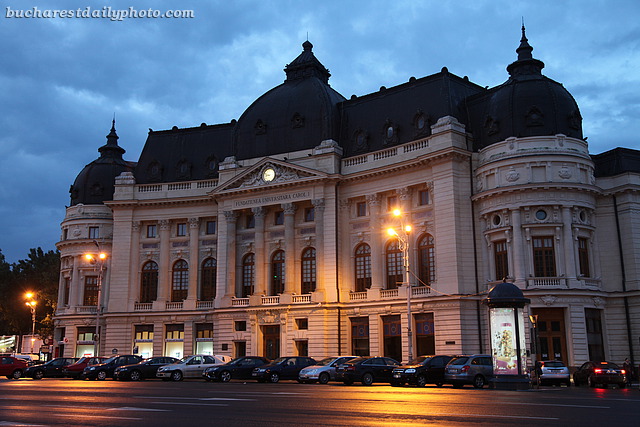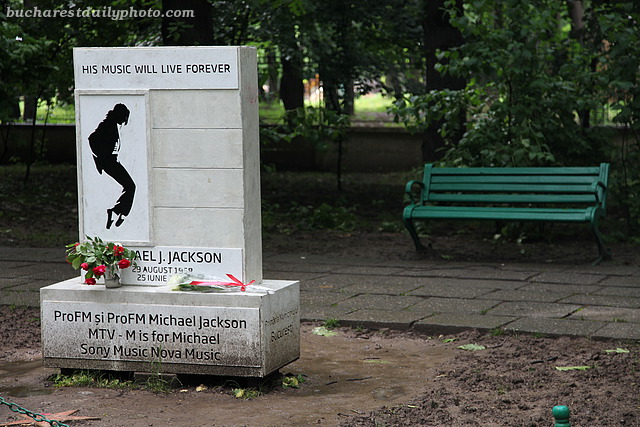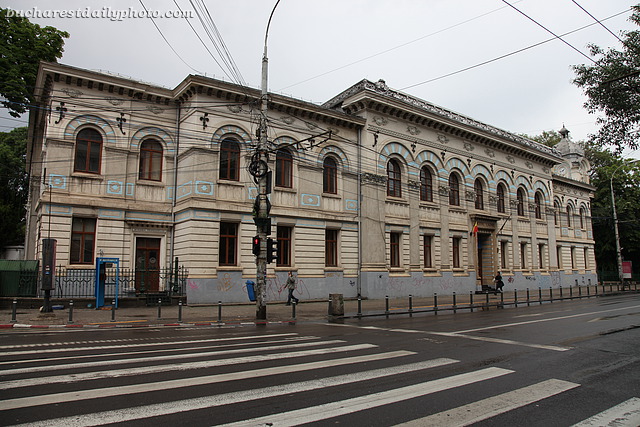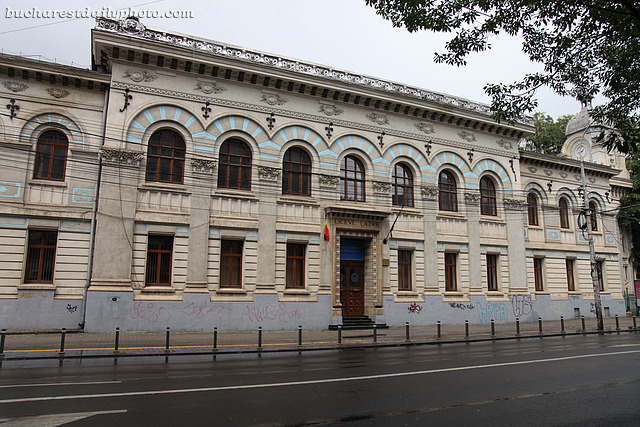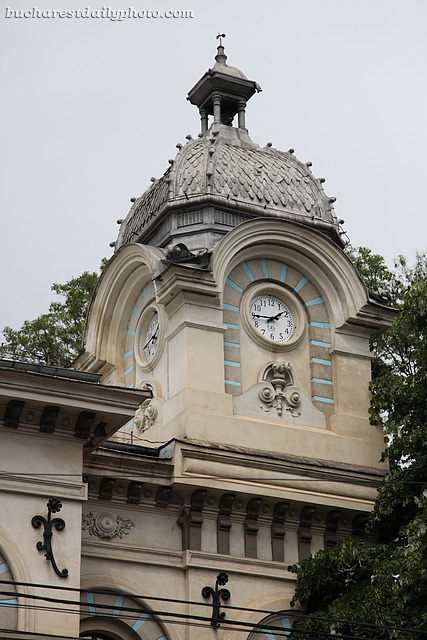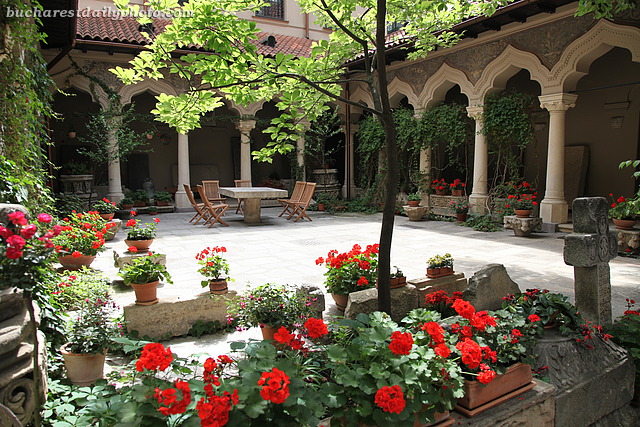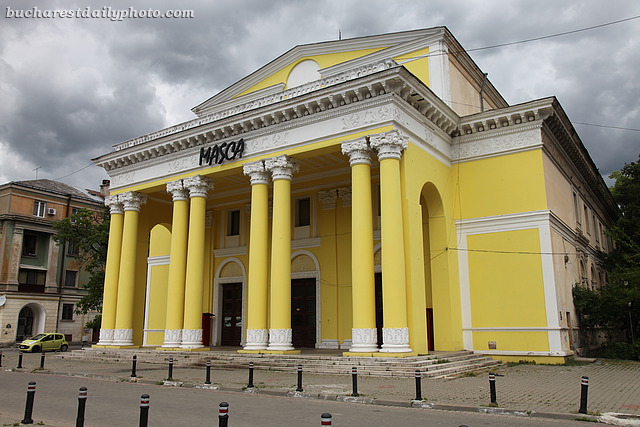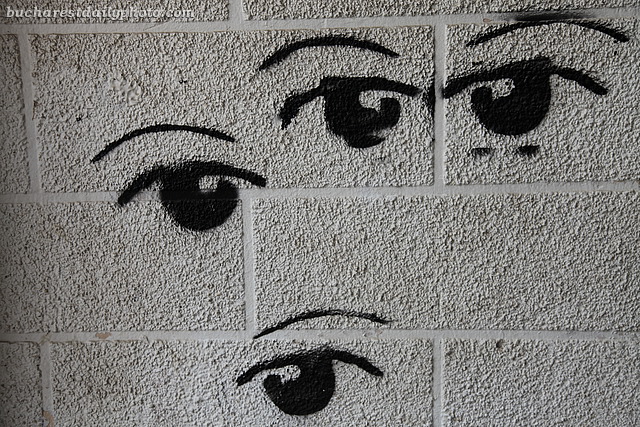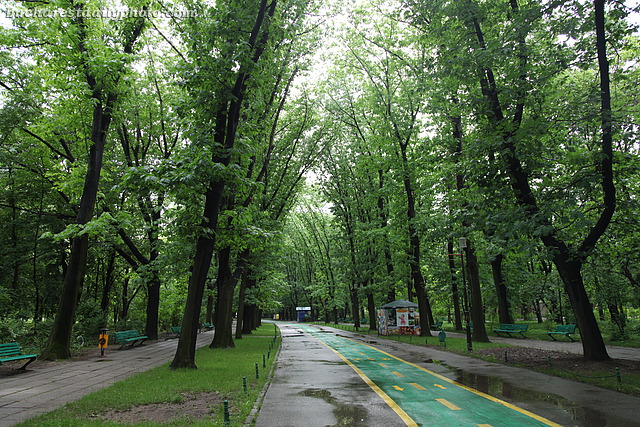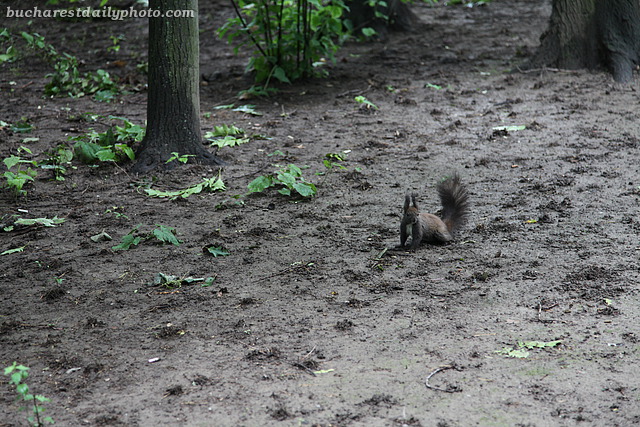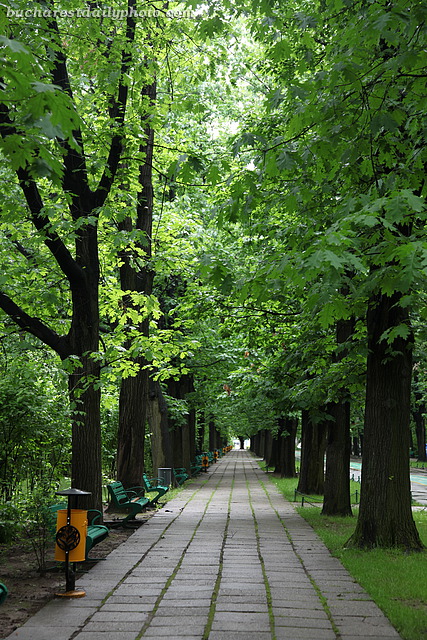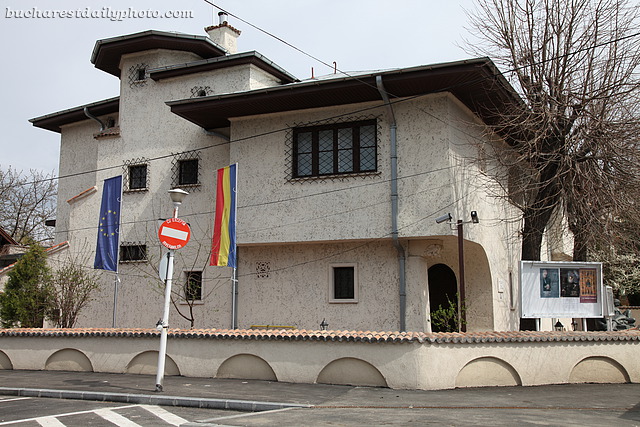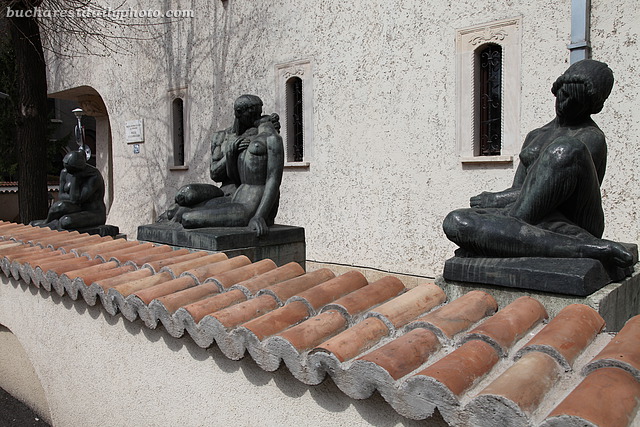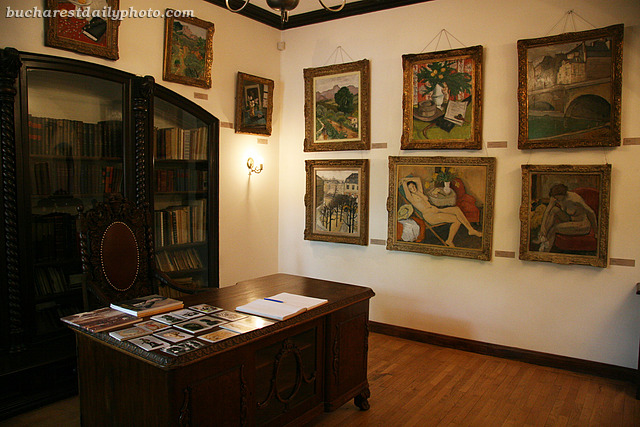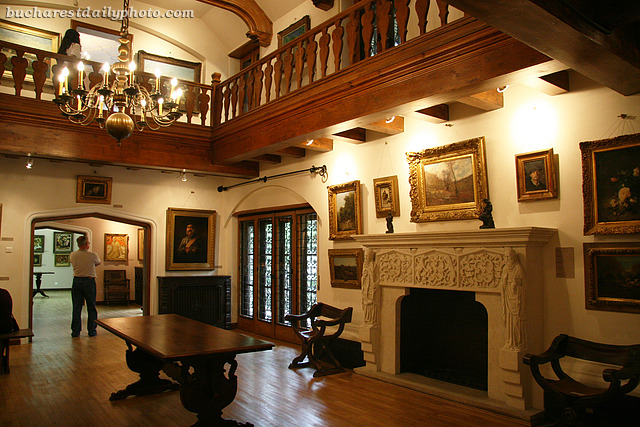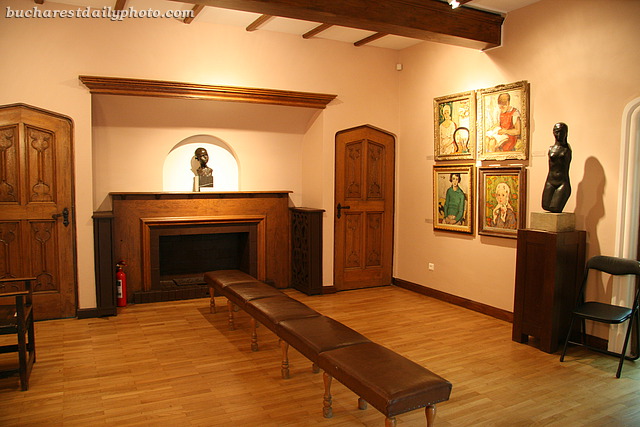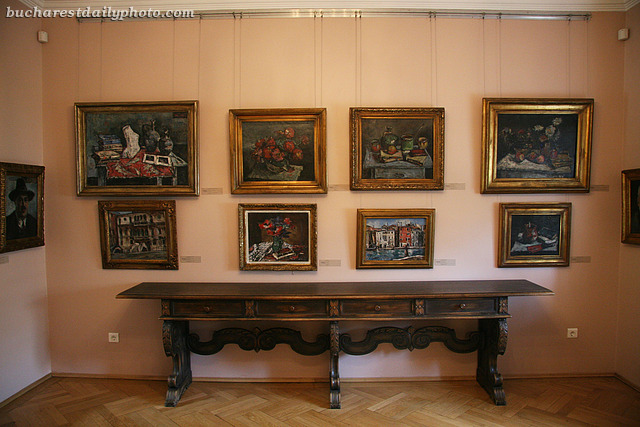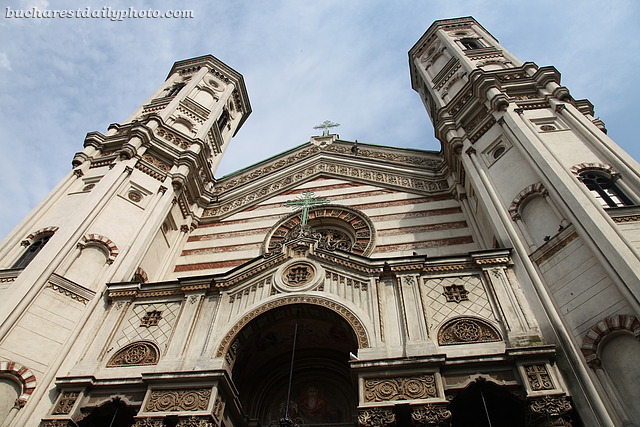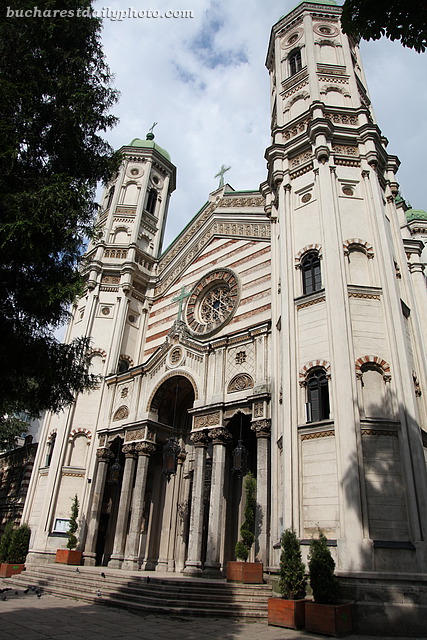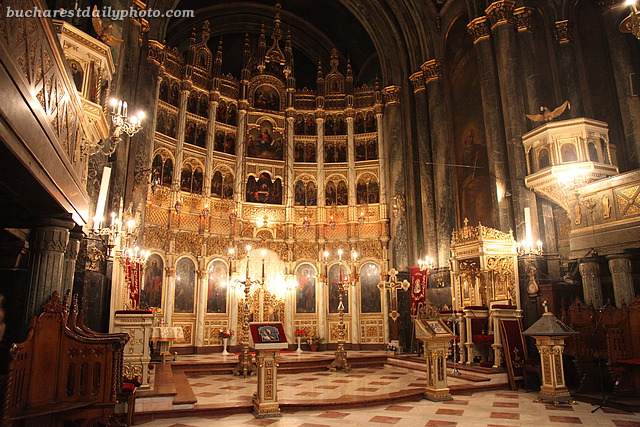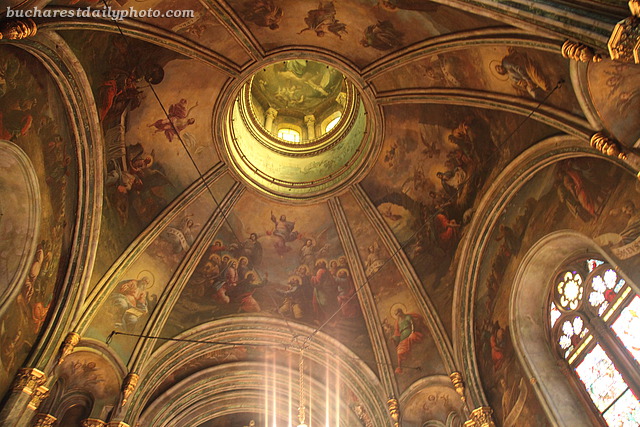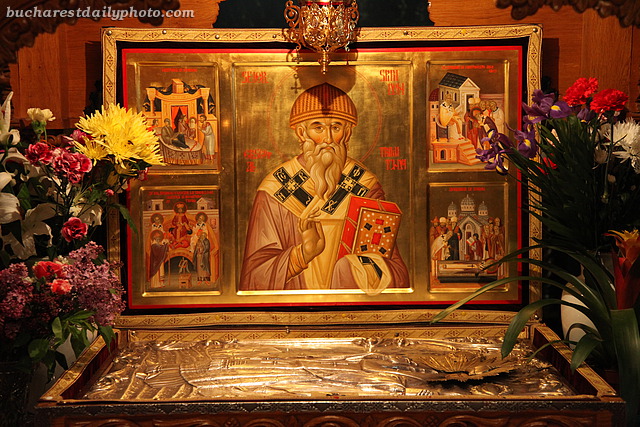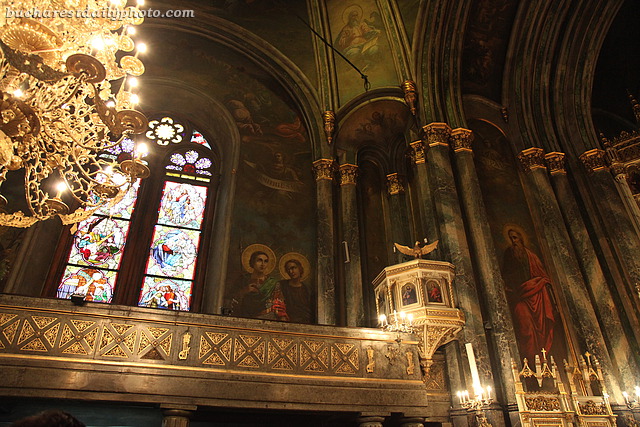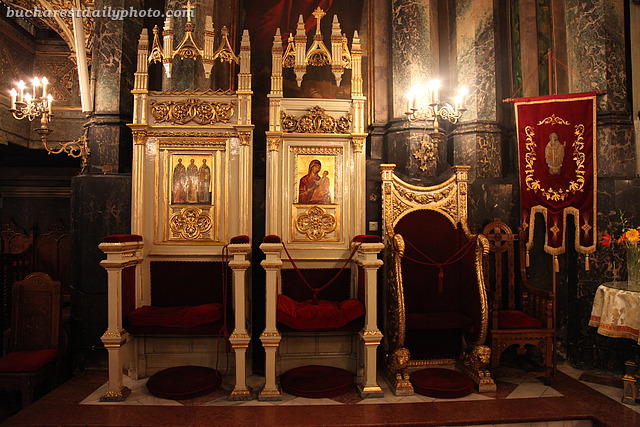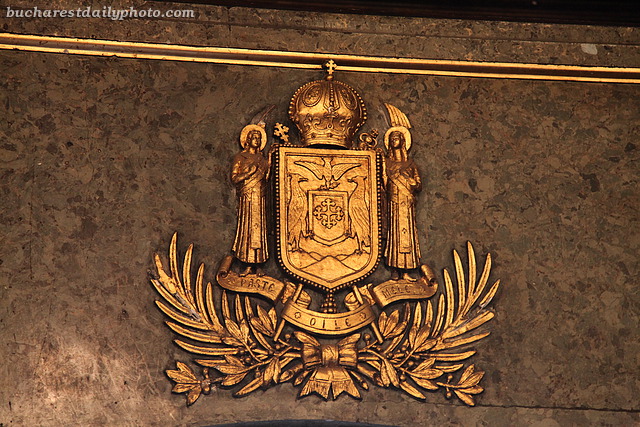Who would have guessed that there’s a Michael Jackson memorial in Bucharest? (of all places 🙂 ) I had no idea before running into it in Herăstrău park three weeks ago.
Gheorghe Lazăr High School is Bucharest’s second oldest high school, being opened in 1860. It is named after Gheorghe Lazăr, a Transylvanian-born Romanian scholar who founded the first Romanian language school in Bucharest in 1818 and whose statue was featured on this blog last January. The high school is one of the most famous in Bucharest and its location at the southeast corner of Cişmigiu park is unbeatable: what better place to go to when you’re skipping classes? 🙂
Late last November I’ve posted a photo of the Stavropoleos church courtyard with the mention that the place looks always beautiful and peaceful, no matter the season or the weather. To further back my words this is how the courtyard looks now at the beginning of summer.
Despite its classical look, the theater building featured in today’s photo is actually not that old. Its former name should give away its approximate age. Until 20 years ago it was called “The Unity Among People Cultural House”. Does that ring a bell? 🙂 It was build in 1953, during the first years of the communism regime, by architect Nicolae Porumbescu. These were the first years of communism in Romania and the style condoned by the regime was called “socialist realism“, the official artistic movement of the Soviet Union. The socialist realism required an artificial return to the classical theme, away from the modernist tendencies of the day. After the 1989 revolution the theater housed “The Mask” theater company (Teatrul Masca in Romanian) which later moved to another venue while this one is awaiting renovation (for quite some time now, but than I guess it’s not easy to gather the money to renovate it).
The pavements too 🙂 cause I’ve seen this stencil graffiti on the sidewalks as well. The eyes are all over the city center.
Krikor Zambaccian (1889 – 1962) was a wealthy Armenian businessman and a lover of fine arts, who over the course of his life assembled a great art collection. În 1930 he asked architect C.D. Galin to design a house that will be used as living quarters as well as a museum for the art collection. In 1942 when the house was ready, Zambaccian opened his collection for public view once a week. The Zambaccian Museum was inaugurated in 1947 when Zambaccian donated his collection and the house to the Romanian state. The donation papers included the condition that the collection will remain in the house but in 1977 after the big earthquake the communist state moved the collection to the Art Collections Museum, citing imaginary concerns about the building’s structure. În 1992, after the fall of communism, the collection was returned to the house and the museum reopened. Most of the works are by Romanian artists (Nicolae Grigorescu, Ioan Andreescu, Ştefan Luchian, Jean Al. Steriadi, Gheorghe Petraşcu, Nicolae Tonitza, Nicolae Dărăscu, Theodor Pallady, Iosif Iser, Corneliu Baba, to name a few) starting with mid-19th century to the mid-20th century. There are also a few paintings by French artists like Delacroix, Renoir, Pissarro, Sisley, Cézanne etc. When I visited there were only 5 or 6 more visitors, so it feels like having the place to yourself. I can only imagine how it was to be living there.
Almost a month ago I got invited to attend a wedding and on this occasion I got the chance to photograph another one of Bucharest’s beautiful churches: New Saint Spyridon Church on Calea Şerban Vodă. The church is the biggest orthodox church in Bucharest and I was really impressed by it, not by its size, but by its handsome interior and exterior. The first church by the name New Saint Spyridon Chuch was built on this site in 1766-1768, construction being started by one of Wallachia’s rulers, Scarlat Ghika, and finished by his son Alexandru Ghika. The building lasted until the year 1852 when the church was rebuilt entirely by architects Luigi Lipizer and Xavier Villacrosse, construction ending in 1858. The oil painting was done by Gheorghe Tattarescu in 1862. In the 20th century the church was damaged in the air raids of the WWII (1944), by the 1940 and 1977 earthquakes and by the construction of Bucharest’s subway in 1979 but the highest threat came when the communists decided to demolish it. Happily, the church was saved through the intervention of the former head of the Romanian church, Patriarch Teoctist. The architectural style is Neo-Gothic with traditional Romanian influences.
